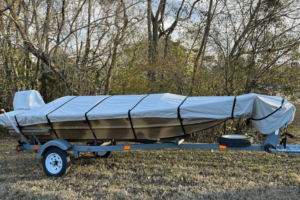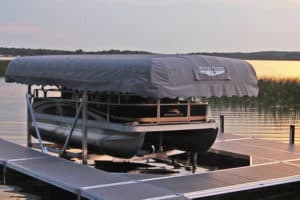Impellers and Propellers are both needed to make a boat function. They both provide thrust, but they function very differently.
A propeller is a fan-shaped device that drives out or propels a fluid by pushing against it. An impeller is a rotor used to increase the flow and pressure of a fluid by producing a sucking force. The impeller is part of a pump.
Read on to find out more about impellers and propellers, their function, and how to maintain them.
Impeller Vs Propeller
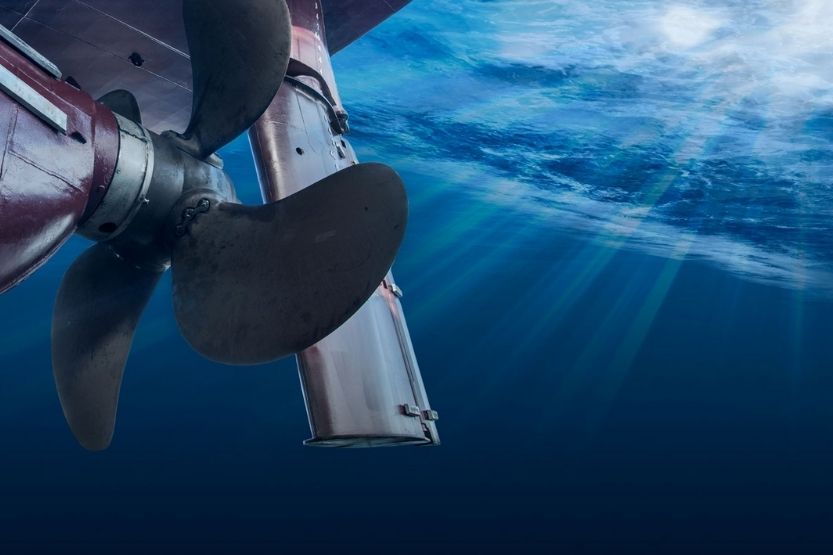
Both impellers and propellers are used to make a boat run.
A propeller is a fan-shaped device that propels fluid by pushing against it. It basically makes the boat move. An impeller is a rotor utilized to increase the flow and pressure of a fluid by producing a sucking force. An impeller is part of a pump. It makes the boat’s engine cool.
Similarities Between Impeller and Propeller
Impellers and propellers have the following similarities:
- To create energy, they both use water.
- Both need a motor to function.
- Rotation is the action used by both to move water.
- Like many machine parts, both must always be well-lubricated to lessen wear and tear.
- Both need proper maintenance to always have peak performance.
Impellers and propellers are different in many ways, but the main difference is in their purpose. Each one has a very different function from the other. The propeller’s blades turn and make the boat move. It can be accelerated or decelerated. The impeller works in the cooling system of the boat. It brings water into the engine to keep it at a cool temperature to not overheat.
An impeller has a forward rotation movement, and a propeller rotates clockwise. Besides, an impeller makes water pressure, and a propeller makes water propulsion. Lastly, an impeller has vanes, and a propeller has blades.
What Is an Impeller?
A boat impeller keeps the boat’s engine at a moderate temperature so that it doesn’t overheat. It is a series of vanes made from rubber that is molded around a hub. The hub has a rotating action and moves the vanes rotating eccentrically in the pump housing. It will pump cool water into the engine while the engine runs to ensure that it keeps cool. The pump sucks in water from outside the boat.
Water from outside the boat comes in through an inlet, and the impeller’s vanes push the water forward. Basically, the impeller is part of a centrifugal pump and is the component that rotates. This action quickly pushes water outward from the center of rotation. Energy is transferred from the pump’s motor to the water, and the quick velocity in the water makes the pressure inside the pump casing.
Types of Impellers
1. Open Impeller
An open impeller has vanes attached to the hub and is mounted on a shaft. It is called an open impeller because it does not have a wall. An advantage of using an open impeller is that it is easy to inspect and maintain because it isn’t covered. They are usually faster than the other impellers. They are best used for small pumps.
2. Semi-closed Impeller
Semi-closed impellers are partially covered, having a back wall. This makes it stronger. Semi-closed impellers can pass mixed solid-liquid mixtures. They may, however, have less efficiency.
3. Closed or Shrouded Impellers
Closed impellers have walls both in the front and at the back, adding to their strength. They are often used in large pumps but don’t do well with mixtures with solids because they are more difficult to clean when they clog. They also have a more complicated design, making it harder to manufacture, more expensive, and more maintenance.
Impeller Maintenance
We already mentioned that an impeller keeps the boat’s engine cool. The impeller is a vital part and needs proper and regular maintenance.
To maintain your impeller, here’s what you can do:
1. Keep Your Impeller Lubricated
Never let your impeller run dry. When an impeller goes completely dry, it only takes a short time for it to disintegrate. Keep them lubricated. Read the manufacturer’s instructions. Some will suggest using a proprietary lubricant or something as basic as dishwashing soap because oil-based grease is bad for some kinds of rubber.
2. Replace the Gasket Regularly
There’s a gasket that seals the plate covering your impeller. This gasket needs to be lubricated regularly too. If it goes brittle, replace it.
3. Do Not Use a Screw Driver to Remove Your Impeller
If you’re replacing an old impeller, avoid using a screwdriver. Doing so can cause damage to the pump housing. There’s a special tool to remove an impeller – an impeller puller. Sometimes, it isn’t easy to use an impeller puller because it doesn’t give you much clearance around the impeller. Best to remove the pump altogether from the engine for easier removal.
4. Always Have a Spare Impeller
You can’t run a boat if you have a broken impeller. Always have a spare ready.
When Is It Time to Replace an Impeller?
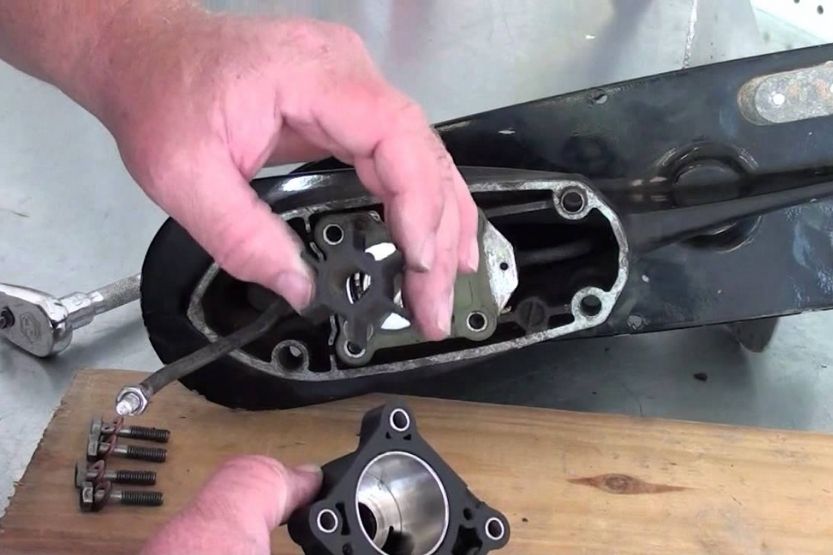
A well-maintained impeller assures that your boat runs smoothly. However, your impeller will inevitably go through the wear and tear process and more so if it is exposed to abrasive material like sand. They also become brittle from the heat. How do you know that it’s time to change your impeller?
- Check your maintenance schedule regularly.
- Your outboard overheats often and quickly.
- You notice that the stream of water in the cooling water outlet has significantly reduced.
- You’ve had your impeller for three years. Impellers are good for a maximum of three years.
Again, what is the difference between an impeller vs propeller? An impeller is a rotor that is part of a pump and produces a sucking force. A propeller is a fan that propels a fluid by pushing against it. It turns rotational motion into linear motion. An impeller is always closed as it draws fluid, and a propeller is always open.
What Is a Propeller?
A propeller is a fan with blades that makes a boat move. The fan makes boat power by turning motion from rotation into thrust. Propellers will usually have 3 or 4 blades. These blades spin around a shaft and make the dynamics to be able to move forward. The blades will rotate and increase water pressure behind every blade. The pressure will make the boat move in the water.
Water passes through the prop from the front to the back and not from side to side. A propeller with more blades creates more power and reduces drag. Many propellers are designed to be closer to the surface of the water for more stability.
Types of Propellers
There are different propellers – some producing more power and speed than the others, some more fuel-efficient than the others. Pitch is the measurement used for the performance of a propeller. Propeller pitch tells you how far the prop moves in a single turn:
1. Fixed-pitch Propellers
This is the most common propeller. This kind of propeller has a fixed pitch whatever the conditions of the water may be. These propellers are very sturdy and powerful. Recreational boats usually have fixed-pitch propellers. Professional boaters often use a different propeller as a fixed-pitch propeller cannot be adjusted when running conditions change.
2. Controllable-pitch Propellers
A controllable-pitch propeller can be adjusted and tuned while running. These propellers are used on engines that have a fixed speed. They work well with boats with varied loads and those that need to get the maximum performance from the engine. Controllable-pitch propellers cost more than other propellers and are also more expensive to maintain.
3. Contra-rotating Propellers
These propellers are double propellers on one shaft, rotating in opposite directions. They are efficient but usually more expensive than fixed-pitch propellers. Also, they give good flexibility in many conditions. Lastly, they are excellent in maneuverability but a little less sturdy than the other propellers.
4. Waterjets
Waterjets do not have propellers, but they can propel forward. They work by forcing water through a tube, making the vessel go forward. They are responsible for the movement of jetskis and high-speed boats. Waterjets are efficient, more so if used in shallow waters.
Again, what is the difference between impeller vs propellers? An impeller is a rotor used to increase the flow and pressure by producing a sucking force. An impeller is part of a pump. A propeller is a fan-shaped device that drives out or propels a fluid by pushing against it.
Propeller Maintenance
A propeller makes your boat move. Proper maintenance is key in keeping your propeller run smoothly. How do you maintain a propeller?
1. Check Your Propeller Visually
Start with regularly checking your propeller visually. Look for any external damage like cracks, dents, and corrosion. Make it a routine to check your propeller every time you head out. It is also a good idea to inspect your propeller upon your return.
Make sure that you have a balanced propeller blade. Dents and nicks usually require an only minor repair. However, a bent blade will usually need a major repair. If you have a bent propeller blade, have it immediately fixed by a boat mechanic.
2. Stick to a Maintenance Schedule
Your engine owner’s manual will usually tell you how often you need to have your propeller and engine checked. You can do this yourself. To begin, remove your propeller from the shaft. After you do this, look if there is any debris in the propshaft area. Fishing lines and other debris can sometimes get tangles here. Remove any debris from the shaft.
3. Check Your Propshaft, Seal, Hub, and Others
Check your propshaft, seal, hub, and propeller blades. If everything looks well, reinstall your propeller. A boat propeller is often low-maintenance, and if you regularly check and inspect it, it should be good for several years.
When Is It Time to Replace a Propeller
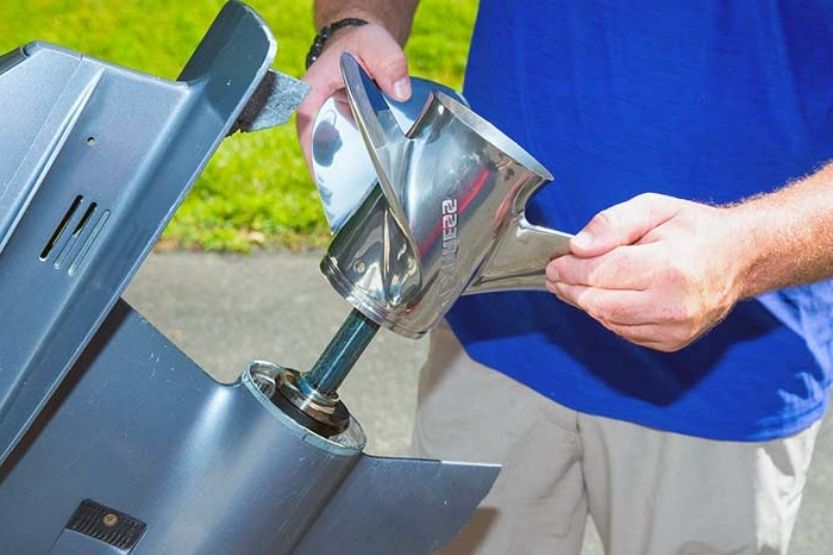
Your propeller is a vital part of your boat. Like all the other parts of your boat, routine checks and maintenance will ensure a smooth-running vessel.
Here are some signs that it’s time to have your propeller replaced:
1. Too Much Pitch
Your propeller will have a pitch. This is a number in inches, and it’s the number of inches your boat moves every time your propeller makes a full rotation. If you have too much pitch, the boat becomes harder to accelerate.
Your propeller is working harder at a lower speed. When this happens, have a mechanic adjust the pitch. If the problem still exists after the adjustment, it’s time to replace your propeller.
2. Not Enough Pitch
If your boat has a pitch that’s too low, your boat may be exerting too much power to try and catch up. Do not leave this problem unattended as it may cause more damage in the long run.
3. Damaged Propeller While You Were in the Water
A propeller has exposure to a lot of things in the water. If you notice even a slight change in the overall performance of your boat, check your propeller. If there is extensive damage to your propeller, like a bent blade, it’s time to have your propeller replaced.
4. Aluminum Propeller
An aluminum propeller is less sturdy than a stainless steel propeller. However, if you don’t use your boat often, an aluminum propeller will be fine. But, if you use it often and have an aluminum propeller, replace it with a stainless steel propeller.
Conclusion: Propeller Vs Impeller
Both an impeller and a propeller are vital parts to make a boat function. Although they are similar in some ways, they have very different functions.
A propeller is a fan-shaped device that drives out or propels a fluid by pushing against it. It basically makes the boat move. An impeller is a rotor used to increase the flow and pressure of a fluid by producing a sucking force. An impeller is part of a pump. It makes the boat’s engine cool.
These are the similarities of an impeller and propeller:
- To create energy, they both use water.
- Both need a motor to function.
- Rotation is the action used by both to move water.
- Like many machine parts, both must always be well-lubricated to lessen wear and tear.
- Both need proper maintenance to always have peak performance.
These are the differences between an impeller and propeller:
- An impeller has a forward rotation movement and a propeller rotates clockwise.
- 2. An impeller makes water pressure and a propeller makes water propulsion.
- 3. An impeller has vanes and a propeller has blades.
Related reading:
Can You Run a Boat with a Bent Prop?
What Is the Best Stainless Steel Propeller?
Parts of a Boat [Motorboat, Sailboat, Fishing Boat]
Boat Won’t Go Over 3000 RPM Under Load [Causes and Solutions]

![Sit-In vs Sit-On Kayak [Difference Between Sit-On-Top vs Sit-In Kayaks] sit in vs sit on kayak](https://boatinggeeks.com/wp-content/uploads/2021/07/sit-in-vs-sit-on-kayak-150x150.jpg)

